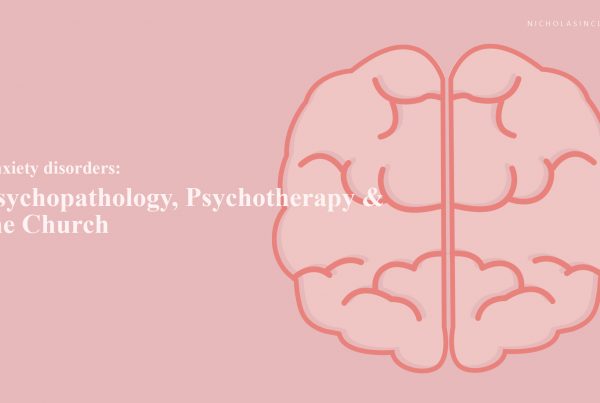Abstract
Found herein is a short review of two neurological disorders, attention deficit/hyperactivity disorder (ADHD) and Huntington’s disease (HD) along with a review of spiritual disciplines and neurobiological activation.
Neurological Disorders: Adverse Effects on Human Development
It is an unfortunate truth that through various stages of human development, neurological disorders may occur. Provided that human development is multidimensional and complex (Wong, Hall, Justice & Hernandez, 2015), the etiology of some neurological disorders may not be self-evident. One neurological disorder that could be characterized as etiologically ambiguous is attention deficit/hyperactivity disorder (ADHD). Moise (2018) specifies that ADHD may occur from a complex combination of numerous genetic components and ecological factors. Genetic components include, but are not limited to, gene encoding of dopamine-beta-hydroxylase, dopamine active transporter 1 and dopamine receptors (DRD4 and DRD5) (Moise, 2018). Ecological factors may include, but are not limited to, maternal psychosocial suffering, smoking and consumption of alcohol during prenatal and childhood developmental stages (Moise, 2018). Given that neurological development is critically important to the development of an individual, factors that adversely impact neurological development may result in functional and structural neurobiological abnormalities (Moise, 2018). Even with numerous epidemiological studies, the etiology of ADHD has proven difficult to precisely identify.
A neurological disorder whose etiology is slightly less ambiguous, but incredibly debilitating, is Huntington’s disease (HD). HD is a progressive neurodegenerative disorder that targets striatal neurons which adversely affects the striatum (Hong, O’Donnell, Savadjiev, Zhang, Wassermann, Pasternak, Johnson, Paulsen, Vonsattel, Makris, Westin, & Rathi, 2018; Sumathipala, Jayasekara, & Dissanayake, 2013). Hong et al. (2018) report investigations conducted through the use of neuroimaging techniques have identified a decrease of striatal volume in individuals with HD. Provided that the striatum contributes to the functioning of interconnected complex mechanisms within the brain, adverse effects can lead to a number of issues such as, but not limited to, chorea, cognitive deterioration, impaired physiological motor output and neuropsychiatric symptoms (Lecumberri, Lopez-Janeiro, Corral-Domenge, & Bernacer, 2018; Sumathipala et al., 2018). An unfortunate truth about HD is that it is neurologically hereditary. The majority of HD diagnoses are in adults, though approximately 5% of all the HD population are under the age of 20 (Mendizabal, Ngo Vu, Thibault, Gonzalez, & Willis, 2017).
Spiritual Disciplines and Neurobiological Output
Advancements in neuroscience have provided researchers with capabilities of investigating numerous psychoneurological and neurobiological effects of various phenomena. Spirituality, including religious practices (meditation, prayer, etc.), have been the focus of said investigations. Through various neuroimaging techniques such as positron emission tomography (PET), single photon emission computed tomography (SPECT) and functional magnetic resonance imaging (fMRI), researchers have been able to investigate correlations between spiritual practices (meditation, prayer, etc.) and neurobiological activation (Newberg, 2011). There is a substantial body of research suggesting numerous benefits across multiple domains (physiological, life satisfaction, emotional stability and overall psychological health) for those who willfully participate in religious practices (Newberg, 2011). Such practices include, but are not limited to, attending religious services, engaging in meditation and prayer (Newberg, 2011). Newberg (2011) reported that participants who practiced in a specific form of meditation witnessed neurobiological outcomes of increased blood flow in the brain’s frontal lobes and a ten percent improvement of general cognitive functioning and verbal memory. Given these results, one may deduce a correlation between spiritual practices and neurobiological outcomes, however, as Newberg (2011) states, further research should be conducted to better understand these correlates.
For those who are willing to venture outside the explicit empirical domain of science, there is nonempirical evidence of the benefits of the spiritual practice of meditation. Supported by and found within the Word of God, 1 Timothy 4:15 (AMP) instructs believers to meditate on the things of God promising that they will benefit from it. Additionally, Joshua 1 (AMP) states that the LORD spoke to Joshua instructing him to meditate on God’s precepts and by doing so, his way would be made prosperous and he would find great success in his mission of leading the Israelites. Whether it be through the empirical scientific evidence or through the Word of God, it appears difficult to ignore the correlations between spirituality and neurobiological effects.
References
Hong, Y., O’Donnell, L. J., Savadjiev, P., Zhang, F., Wassermann, D., Pasternak, O., Johnson, H., Paulsen, J., Vonsattel, J., Makris, N., Westin, C. F., & Rathi, Y. (2018). Investigation into local white matter abnormality in emotional processing and sensorimotor areas using an automatically annotated fiber clustering in major depressive disorder. NeuroImage, 181, 16-29. doi: 10.1016/j.neuroimage.2018.06.019
Lecumberri, A., Lopez-Janeiro, A., Corral-Domenge, C., & Bernacer, J. (2018). Neuronal density and proportion of interneurons in the associative, sensorimotor and limbic human striatum. Brain Structure & Function, 223(4), 1615–1625. https://doi-org.ezproxy.liberty.edu/10.1007/s00429-017-1579-8
Mendizabal, A., Ngo Vu, A., Thibault, D., Gonzalez, A. P., & Willis, A. (2017). Hospitalizations of children with Huntington’s disease in the United States. Movement Disorders Clinical Practice, 4(5), 682–688. https://doi-org.ezproxy.liberty.edu/10.1002/mdc3.12506
Moise, A. C. (2018). Causes of attention-deficit/hyperactivity disorder (ADHD). Romanian Journal of Cognitive-Behavioral Therapy & Hypnosis, 5(1/2), 1–7. Retrieved from https://search-ebscohost-com.ezproxy.liberty.edu/login.aspx?direct=true&db=asn&AN=130448903&site=ehost-live&scope=site
Newberg, A. B. (2011). Spirituality and the aging brain. Generations, 35(2), 83-91. Retrieved from http://ezproxy.liberty.edu/login?url=https://search-proquest-com.ezproxy.liberty.edu/docview/906522803?accountid=12085
Sumathipala, D. S., Jayasekara, R. W., & Dissanayake, V. H. W. (2013). Clinical and genetic features of Huntington disease in Sri Lanka. BMC Neurology, 13, 191. https://doi-org.ezproxy.liberty.edu/10.1186/1471-2377-13-191
Wong, D., Hall, K. R., Justice, C. A., & Hernandez, L. W. (2015). Human growth and development (Custom Package). Thousand Oaks, CA: Sage Publication


